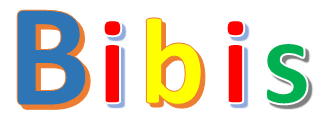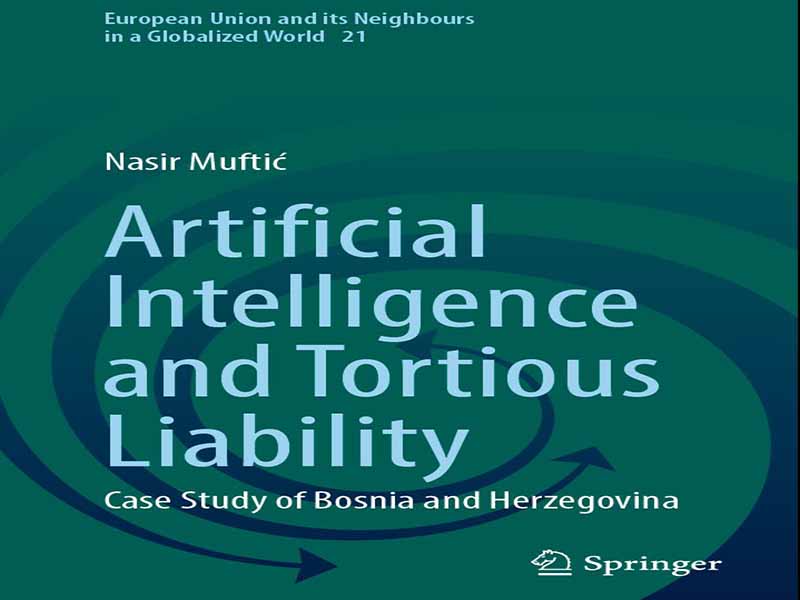- عنوان کتاب: Artificial Intelligence and Tortious Liability
- نویسنده: Nasir Muftić
- حوزه: کاربرد هوش مصنوعی
- سال انتشار: 2025
- تعداد صفحه: 227
- زبان اصلی: انگلیسی
- نوع فایل: pdf
- حجم فایل: 1.69 مگابایت
به سختی می توان هیچ بحثی در مورد آینده بدون اشاره به فناوری های دیجیتال رخ داد. چه به عنوان یک دیدگاه آرمانشهری یا یک نگرانی دیستوپیایی، تقریباً همه در مورد تأثیر فناوریهای دیجیتال بر زندگی ما فکر میکنند. در میان فناوریهای دیجیتال، هوش مصنوعی (از این پس هوش مصنوعی) بیشترین توجه را به خود جلب میکند و ابروها را بالا میبرد. اغلب بهعنوان بیسابقه و پیشگام توصیف میشود، این پتانسیل را دارد که نحوه تعامل ما با یکدیگر، انجام هر روز کارهای ساده و پیچیده و در نهایت نحوه درک ما از جهان را تغییر دهد. هوش مصنوعی میتواند بهطور تدریجی جایگزین انسانها در مشاغلشان شود و احتمالاً به شیوهای غیرقابل انکار. اگر هوش مصنوعی جایگزین مشاغل انسانی شود، سرنوشت نیروی کار عظیمی که بیکار مانده اند چه خواهد بود؟ آیا اکنون میتوانیم پیشبینی کنیم که چه کسانی قربانی تغییر خواهند شد و کاری برای ارتقای موقعیت خود انجام دهیم؟ کارل بندیکت فری، مورخ فناوری، در کتاب خود به نام «تله فناوری»1 پیشنهاد میکند که ما قبلاً این را دیدهایم و نابرابری در ثروت ناشی از ظهور فناوری پیشگامانه یک سناریوی واقعی در گذشته بود. بنابراین افزایش نابرابری به عنوان یک الگوی تکرارشونده در انقلاب های تکنولوژیک ظاهر می شود. پرداختن به وسعت مشکلات احتمالی در این کار بسیار بلندپروازانه خواهد بود. در عوض، من بر پاسخ های سیستم مسئولیت ظلم آور بوسنی و هرزگوین (از این پس: B&H) به حوادث مربوط به هوش مصنوعی تمرکز خواهم کرد.
این نیز سؤالی است که به نظر من نه تنها حقوقدانان را شایسته توجه است. پیامدهای عملی داشتن هوش مصنوعی درگیر در رویدادهای بالقوه مضر اهمیت اجتماعی گسترده تری دارد. کاهش دخالت انسان در حوادث ناشی از خطاهای انسانی، مانند خستگی یا استرس مستلزم بازنگری در استانداردهای قانونی با تمرکز بر ویژگی های انسان است. فناوری، بر خلاف انسان، خستگی یا استرس را تجربه نمی کند. کودک بیمار ندارد که به دلیل آن تمرکز خود را از دست بدهد یا به سادگی یک روز بد داشته باشد. تحقیقات نشان می دهد که تعداد زیادی از تصادفات وسایل نقلیه موتوری به دلیل خطاهای انسانی مانند سرعت غیرمجاز، رانندگی تحت تأثیر الکل و سایر مواد روانگردان، عدم استفاده از کلاه ایمنی موتورسیکلت، کمربند ایمنی، صندلی کودک و عواملی مانند تلفن همراه رخ می دهد. با این حال، پیاده سازی هوش مصنوعی در فعالیت ها مستلزم بازنگری در نحوه عملکرد سیستم های قانون شکایت است. چالش های درون سیستم در هر دو سطح گسترده و خاص وجود دارد. به عنوان مثال، در سطح گسترده، در ابتدا سخت است که AI را در یک تعریف قانونی قابل اجرا بیان کنیم. به دلیل ماهیت متغیر و غیرقابل پیش بینی آن، بین دانشمندان در مورد اینکه هوش مصنوعی چیست اتفاق نظر وجود ندارد. تعاریف معمولاً آن را با عباراتی مانند خودمختاری، هوشمندی و شفافیت توصیف میکنند، اما حتی این موارد نیز میتوانند مبهم باشند. استقلال یا هوش دقیقا چیست؟ اگر یک تعریف علمی قابل قبول از این پدیده ممکن است به سختی قابل درک باشد، تعریف قانونی نیز چنین است. پاسخ به بسیاری از سؤالات نباید به بحث انحصاری وکلای دادگستری مربوط باشد، بلکه باید مربوط به یک جمعیت گسترده تر باشد. برای مثال، اینکه آیا هوش مصنوعی باید در هر زمینه ای از زندگی ما مجاز باشد، یا بخش های خاصی از آن به سادگی بیش از حد آسیب پذیر یا حساس هستند. این موضوع در نهادهای اتحادیه اروپا به عنوان بخشی از بحث گسترده تر در مورد سند قانونی تحت عنوان قانون هوش مصنوعی مورد بحث قرار گرفته است. در حالی که چنین سؤالاتی به طور دقیق تحت تأثیر مسئولیت مدنی قرار نمی گیرند، مطمئناً نمی توان آنها را از آن جدا کرد. حداقل در این اثر به آنها و همچنین اهمیت آنها برای تنظیم مسئولیت اشاره خواهد شد. با این حال، مجموعه دیگری از سؤالات که می توان آنها را گسترده توصیف کرد، باید با نظر روشن نویسنده آنها مورد بررسی قرار گیرد. اینها سؤالات گسترده ای هستند که به عنوان مبنایی برای هرگونه مشورت بیشتر در مورد مقررات مسئولیت برای هوش مصنوعی عمل می کنند. در این کار، چنین سوالاتی با درک روشن و راه حل های پیشنهادی ارائه شده است. مثالها درک محصول تحت مقررات مسئولیت محصول و اینکه کدام یک از مخاطبین بالقوه مسئولیت مستحق تحمل بار نهایی پاداش است.
علیرغم اینکه این عنوان بوسنی و هرزگوین را در کانون توجه قرار می دهد، این اثر بر کار دانشمندان کشورهای مختلف تکیه دارد. دو دلیل وجود دارد که چرا این رویکرد نه تنها موجه، بلکه فقط ممکن است. اول، تا آنجا که من می دانم، حوزه های قضایی در سراسر جهان هنوز در حال توسعه رویکردهای خود برای تنظیم مسئولیت AI هستند. عدم وجود قوانین خاص در مورد مسئولیت AI به این معنی نیست که اصلاً قوانینی در مورد مسئولیت وجود ندارد. تصمیم برای برخورد با هوش مصنوعی با قوانین کلی مسئولیت، مانند مواردی که در قوانین مدنی و قوانین موجود است، نیز یک انتخاب نظارتی است. قوانین کلی به گونه ای طراحی شده اند که برای آینده و فناوری خنثی باشند تا انعطاف پذیر باشند و بنابراین برای طیف وسیعی از تصادفات قابل اجرا باشند. در حالی که قوانین کلی در سراسر اروپا با یکدیگر متفاوت است، آنها معمولاً بر اساس مبانی و اصول یکسانی هستند. این شباهت ها امکان مقایسه را فراهم می کند.
Hardly can any discussion about the future occur without reference to digital technologies. Whether seen as a utopian vision or a dystopian concern, nearly everyone has thoughts on the impact of digital technologies on our lives. Among digital technologies, artificial intelligence (hereinafter: AI) is the one that captures the most attention and raises eyebrows. Often described as unprecedented and groundbreaking, it bears the potential to change the way we interact with one another, do every day simple and complex tasks, and, eventually, how we perceive the world. AI would be able to incrementally replace humans in their jobs and probably so in an unmistakable fashion. If AI replaces human jobs, what would be the fate of the vast workforce left jobless? Can we already now predict who are going to be victims of the change and do something to enhance their position? Historian of technology Carl Benedikt Frey in his book “The technology trap”1 suggests that we have seen this before and that inequalities in wealth caused by the emergence of groundbreaking technology were a realistic scenario in the past. The rise of inequal-ity therefore appears as a recurring pattern in technological revolutions. Addressing the breadth of potential problems in this work would be overly ambitious. Rather, I will focus on the responses of the tortious liability system of Bosnia and Herzegovina (hereinafter: B&H) to accidents involving AI.
This, too, is a question which, in my opinion, deserves the attention of not only lawyers. The practical implications of having AI involved in potentially harmful events have broader societal importance. Reduction of human involvement in accidents caused by human errors, such as fatigue or stress requires rethinking legal standards with characteristics of humans in focus. Technology, unlike humans, doesn’t experience fatigue or stress. It does not have a sick child due to which it would lose focus or simply have a bad day. Research suggests that a great number of motor vehicle accidents occur due to human errors, such as speeding, driving under the influence of alcohol and other psychoactive substances, nonuse of motorcycle helmets, seatbelts, child restraints, and distractions such as mobile phones.2 None of these problems may exist if we exclude humans as the operators of vehicles. However, implementing AI in activities requires rethinking how tort law systems work. Challenges within the system exist on both broad and specific levels. On the broad level, for example, it is hard at the outset to formulate what is AI in an operable legal definition. There is no consensus among scientists on what is AI due to its changing and unpredictable nature. Definitions typically describe it through terms such as autonomy, intelligence, and opacity, but even these can be vague. What is autonomy or intelligence exactly? If an acceptable scholarly definition of this phenomenon may be hard to fathom, so is a legal one. Answers to many questions should not be a matter of exclusive deliberation of lawyers but of a broader population. For example, whether AI should be allowed in every field of our lives, or certain parts of it are simply too vulnerable or sensitive. This has been debated in the EU institutions as a part of the broader discussion about the legal instrument titled AI Act. While such questions do not strictly fit under the work on civil liability, they certainly cannot be divorced from it. They will be at least mentioned in this work, as well as their importance for the regulation of liability. Another set of questions that can be described as broad has to be addressed with a clear opinion of their author, however. Those are broad questions that act as a basis for any further deliberations on the regulation of liability for AI. In this work, such questions are provided with a clear understanding and proposed solutions. The examples would be understanding of product under the regulation of product liability and which of the potential addressees of liability deserves to bear the ultimate burden of remuneration.
Despite the title puts Bosnia and Herzegovina in focus, this work relies on the work of scholars from different countries. There are two reasons why this approach is not only justified but only possible. First, as far as I am aware, jurisdictions around the world are still developing their approaches to the regulation of AI liability. The non-existence of specific rules on AI liability does not mean that there are no rules on liability at all. A decision to treat AI with general rules of liability, such as the ones found in civil codes and statutes, is also a regulatory choice. General rules are designed to be future-proof and technology-neutral in order to be flexible and therefore applicable to a range of accidents. While general rules around Europe differ from one another, they are typically based on the same foundations and principles. These similarities allow for drawing comparisons. Second, scholarship in Bosnia and Herzegovina (hereinafter: B&H) on legal aspects of AI is almost non-existent. It would be impossible to use the opinions of local experts since they are unavailable in written form so far.
این کتاب را میتوانید از لینک زیر بصورت رایگان دانلود کنید:



































نظرات کاربران